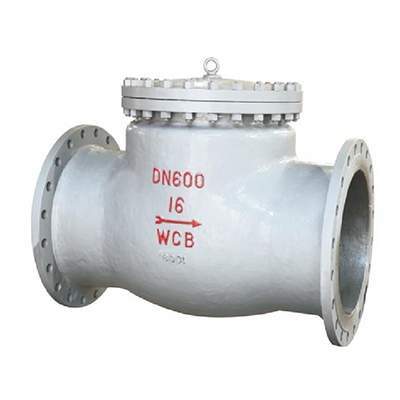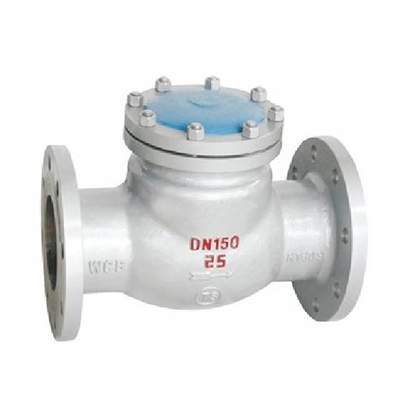Welcome to My Blog!
Before we dive into the content, I’d love for you to join me on my social media platforms where I share more insights, engage with the community, and post updates. Here’s how you can connect with me:
Facebook:https://www.facebook.com/profile.php?id=61563865935136
Now, let’s get started on our journey together. I hope you find the content here insightful, engaging, and valuable.
Introduction

Selecting the right fire safe check valve is a critical decision for industries dealing with high-temperature applications, flammable fluids, and stringent safety regulations. A fire safe check valve ensures that in the event of a fire, the valve continues to function without leakage, preventing the spread of hazardous materials. Fanlei, a leading valve manufacturer integrating R&D, design, production, and sales, has extensive experience supplying high-quality fire safe check valve solutions tailored to diverse applications. This guide will explore everything you need to know to make an informed selection, from material considerations and certification requirements to installation best practices and maintenance tips.
Fire Safe Check Valve Basics
What Is a Fire Check Valve?
A fire check valve is a specialized form of check valve designed to maintain its sealing integrity and operational capability during and after exposure to fire. Unlike standard check valves, these valves incorporate materials and designs that withstand extreme temperatures, preventing external leakage even when the seating material degrades. By understanding what constitutes a fire check valve, engineers and safety managers can choose the best option for applications in oil and gas, petrochemical, power generation, and other fire-prone environments.
Key Components of a Fire Safe Check Valve
- Valve Body and Bonnet: Typically constructed from carbon steel or stainless steel, the body and bonnet of a fire check valve must withstand thermal expansion and mechanical stress during fire exposure.
- Metal-to-Metal Seating: A core feature of fire safe check valve design is metal-to-metal seating, which replaces soft seat materials that melt at high temperatures. This ensures the valve remains sealed even when the internal packing or gaskets fail.
- Fire-Resistant Packing and Gaskets: To provide a secondary barrier, most fire check valve designs include graphite or ceramic-based packing and gaskets that resist temperatures above 650 °C (1200 °F).
- Spring or Weight Mechanism: In spring-loaded fire check valve models, the spring is often coated or made from high-temperature alloys to maintain resilience during fire exposure.
- Drain Ports and Fire Testing Arrangements: Many fire check valve designs incorporate drain ports and specific test points so that companies can verify valve integrity under simulated fire conditions.
Why Choose a Fire Safe Check Valve for Critical Applications
Fire scenarios pose severe risks, including the uncontrolled release of flammable or toxic fluids. A fire check valve minimizes these risks by maintaining a positive seal when exposed to flame or excessive heat. Industries such as petrochemical refineries, offshore drilling platforms, and aerospace facilities require fire check valve installations to comply with regulations like API 607 and API 6FA. By choosing a fire safe check valve, organizations demonstrate due diligence in protecting personnel, assets, and the environment.
- Compliance with Safety Standards: Installing a certified fire safe check valve helps meet local and international fire safety regulations, avoiding potential fines and shutdowns.
- Operational Reliability: In high-pressure, high-temperature pipelines, a fire check valve ensures backflow prevention remains intact during fire, reducing downtime and maintenance costs.
- Enhanced Safety for Personnel: By preventing toxic or flammable fluid release during emergencies, a fire check valve significantly reduces risks to on-site personnel.
- Extended Service Life: Although fire safe check valve units typically incur higher upfront costs, their durable materials and robust design often translate to longer intervals between replacements.
Material Selection for Fire Safe Check Valves
Selecting the proper materials for a fire safe check valve is essential for performance and durability. Fanlei’s state-of-the-art facilities allow for precise material engineering to fit specific customer needs.
Common Materials Used in Fire Safe Check Valves
- Carbon Steel (WCB, WCC): Ideal for a broad range of applications, carbon steel provides excellent strength and moderate corrosion resistance. Fanlei offers carbon steel fire check valve bodies that cover standard temperature ranges from -29 °C to 425 °C.
- Stainless Steel (304, 316, 316L): Frequently chosen for corrosive environments, stainless steel fire safe check valve bodies resist chemical attack and can handle temperatures up to approximately 815 °C. Fanlei custom fabricates stainless steel designs for specialty applications where corrosion is a concern.
- Alloy Steel (F11, F22, F91): For higher temperature or pressure requirements, alloy steels offer increased strength and creep resistance. Fanlei engineers can supply alloy steel fire check valve configurations compliant with API 6A specifications.
Fire-Resistant Seals and Gaskets
A sealing system in a fire safe check valve must survive beyond the melting point of standard elastomers (often around 200 °C). Common fire-resistant sealing materials include:
- Graphite: Graphite packing and gaskets can endure continuous temperatures up to 815 °C. Graphite’s self-lubricating properties also benefit valve longevity.
- Ceramic Fiber: Ceramic fiber-based gaskets maintain integrity beyond 1000 °C. Fanlei offers custom ceramic fiber sealing solutions for specialized fire check valve models.
- Metal C-Ring Gaskets: For metal-to-metal sealing, C-ring gaskets made from nickel or stainless steel provide an effective barrier once soft seat materials are compromised by fire.
Testing and Certification Standards for Fire Safe Check Valves
Meeting globally recognized certifications is crucial when selecting a fire safe check valve. Always verify that your supplier can provide documented proof of compliance. Fanlei’s quality management system (ISO 9001:2015) ensures each fire safe check valve meets or exceeds industry standards.
API 607 and API 6FA Fire Testing
- API 607: Applies to in-line valves. The fire safe check valve under test is subjected to a standardized fire exposure, followed by hydrostatic testing at room temperature to ensure no leakage (Class I, II, or III rating depending on class criteria). Fanlei’s fire check valve units have achieved API 607 Class I certification for steam services up to 540 °C.
- API 6FA: Focused on wellhead and surface safety valves for the petroleum and natural gas industry. Although primarily for safety valves, some fire safe check valve variants used in wellhead installations also adhere to API 6FA protocols.
ISO Standards and Other Approvals
- ISO 10497: International equivalent to API 607; many fire check valve manufacturers seek dual-certification. Fanlei’s R&D team conducts both API and ISO testing to facilitate export to European and Asian markets.
- BS 6755: British Standard fire testing procedures for industrial valves; Fanlei collaborates with accredited test bodies to secure BS 6755 certification for specialized fire safe check valve orders.
- PED 2014/68/EU: For European installations, Fanlei ensures that fire check valve products meet the Pressure Equipment Directive, enabling smooth CE marking processes.
Fire Safe Check Valve Selection Criteria
When evaluating fire safe check valves, pay attention to several critical parameters:
- Pressure Class: Determine whether PN16, PN25, PN40, or higher classes are required. Fanlei offers fire safe check valve models rated up to Class 800 (1480 psi) for high-pressure systems.
- Temperature Range: Assess the maximum operating temperature. Pair appropriate body materials and sealing systems to accommodate both normal service and potential fire exposure. Fanlei provides temperature-rating charts for each fire safe check valve configuration.
- End Connection Type: Choose between flanged, butt weld, socket weld, or threaded ends, based on piping standards (ANSI, DIN, JIS). Fanlei’s in-house machining capabilities ensure precision alignment and sealing for any fire safe check valve connection type.
- Media Compatibility: Confirm chemical compatibility of valve materials with fluids in your process. For corrosive or toxic media, Fanlei recommends 316L or duplex stainless steel fire safe check valve constructions.
- Certification Requirements: Verify required certifications (API, ISO, BS, PED) for legal compliance. Fanlei’s certifications and material test reports (MTRs) accompany each fire safe check valve shipment.
Fire Safe Check Valve Technical Specifications Table
Below is a comparative table illustrating typical specifications for common fire safe check valve designs. This table highlights key technical metrics—excluding brand comparisons—ensuring an objective evaluation of features:
| Specification | Series FLCV-100F (Carbon Steel) | Series FLSV-200S (316 SS) | Series FLAV-300A (Alloy Steel) |
|---|---|---|---|
| Body Material | ASTM A216 WCB | ASTM A351 CF8M | ASTM A182 F11 |
| Temperature Rating (Normal) | -29 °C to 425 °C | -29 °C to 815 °C | -29 °C to 540 °C |
| Fire Temperature Rating | Up to 650 °C | Up to 750 °C | Up to 700 °C |
| Seat Type | Metal-to-Metal | Metal-to-Metal | Metal-to-Metal |
| Sealing Material | Graphite Packing | Ceramic Fiber Gasket | Graphite Packing |
| Pressure Class | Class 150–300 | Class 150–600 | Class 300–800 |
| End Connection | RF Flanged (ANSI B16.5) | RTJ Flanged (ANSI B16.5) | Butt Weld (Butt-Welding) |
| Test Standard | API 607 Class I | ISO 10497 | API 6FA |
| Typical Applications | Steam, Water, Hydrocarbon | Acidic, Corrosive Services | High-Temp Steam, Petrochemical |
Installation Best Practices for Fire Safe Check Valves
Proper Orientation and Alignment
A fire safe check valve must be installed in the correct orientation—usually horizontally or vertically, depending on the design. Incorrect installation can lead to improper seat engagement:
- Horizontal Installation: Ensure the valve axis is parallel to the pipeline, with the flow direction arrow aligned correctly. Fanlei’s technical team provides detailed drawing packages illustrating proper installation angles and clearances.
- Vertical Installation: Some fire safe check valve models allow vertical flow (upward). In these cases, confirm that the internal disc swings freely and does not stick under gravity or thermal expansion.
Adequate Pipe Support and Thermal Expansion Accommodation
Thermal expansion during normal operation or in fire conditions can stress valve flanges and body. Incorporate supports or expansion loops:
- Pipe Supports: Position supports close enough to the valve to minimize cantilever loads. Fanlei recommends using adjustable pipe hangers that allow slight movement.
- Expansion Accommodation: Install expansion joints or loops within 3–5 m of the fire safe check valve to absorb thermal growth and reduce stress on the valve body.
Accessibility for Inspection and Maintenance
Position the fire safe check valve so that technicians can safely access drain ports, test ports, and flange bolts:
- Test Ports: If the fire safe check valve includes fire test ports, ensure they remain accessible without dismantling surrounding pipe sections.
- Drain Arrangements: If the system features a drip leg or drain line, verify that gravity drainage flows away from personnel work areas.
Maintenance and Inspection Tips for Fire Safe Check Valves
Regular maintenance of a fire safe check valve preserves fire integrity and operational reliability. Fanlei advises scheduled maintenance intervals based on service conditions:
- Routine Visual Inspections (Quarterly): Check for external damage, corrosion, or loss of paint/coating. Ensure flange bolts remain torqued to specification.
- Operational Testing (Semiannual): Verify that the valve disc moves freely and seats properly. For spring-loaded models, confirm spring tension remains within manufacturer tolerance.
- Fire Simulation Testing (Annually or as Required by Regulation): Engage accredited laboratories to perform fire exposure tests per API 607 or ISO 10497. A fire safe check valve that fails fire testing must be immediately replaced or rebuilt using genuine Fanlei parts.
- Packing and Gasket Replacement (Every 2–3 Years): Even though fire safe check valve packing is fire-resistant, repeated thermal cycles can degrade graphite or ceramic seals. Replace packing and gaskets according to Fanlei’s maintenance manual.
- Seat Inspection and Reconditioning (As Needed): If seat leakage is detected during back-pressure testing, consider seat regrinding or replacing the entire sealing assembly. Fanlei offers on-site re-manufacturing support for critical fire safe check valve sizes.
Common Pitfalls in Fire Safe Check Valve Selection

Overlooking Fire Test Requirements
One of the most frequent mistakes is choosing a fire safe check valve without verifying third-party fire testing. Some valves advertised as “fire safe” have only partially fire-resistant components. Always request a certificate showing compliance with API 607 or ISO 10497.
Neglecting Media Compatibility
Selecting a fire safe check valve solely based on fire rating may result in corrosion-related failures if the chosen materials aren’t compatible with the process fluid. For instance, using a carbon steel model in an acidic environment can accelerate corrosion, compromising both fire safety and normal operations. Fanlei’s engineers perform thorough material compatibility assessments for each custom order.
Ignoring Pressure Transients and Water Hammer
High-velocity fluid surges can damage a fire safe check valve disc or seat. Ensure that your selection accounts for dynamic conditions:
- Disc Design: Opt for a spring-assisted disc or guided disc model if water hammer is likely. Fanlei’s “soft-seated” spring-loaded fire safe check valve variants mitigate slamming incidents.
- System Dampeners: Incorporate surge arrestors or dampeners upstream of the valve to reduce the impact of transient spikes.
Misjudging Maintenance Requirements
Underestimating the maintenance complexity of a fire safe check valve may lead to unexpected downtime. Factors often overlooked include:
- Valve Size and Weight: Large-diameter fire safe check valve units (≥ 24 inches) can exceed 200 kg, requiring cranes or hoists for disassembly.
- Specialized Seals: Ordering generic graphite packing for a fire valve can be cheaper but may void fire certifications. Always source OEM-approved replacement parts from reputable suppliers like Fanlei.
Conclusion
Selecting the appropriate fire safe check valve is a multifaceted process that involves understanding fire test standards, material properties, installation best practices, and maintenance protocols. By choosing a certified and properly engineered valve—such as those designed and manufactured by Fanlei—you ensure maximum safety, regulatory compliance, and long-term reliability. To discuss your specific requirements or request a quote, contact us today for personalized guidance and competitive pricing. We look forward to helping you safeguard your operations with premium fire safe check valve solutions.
FAQ
What distinguishes a fire safe check valve from a standard check valve?
A fire safe check valve features metal-to-metal seating and fire-resistant packing that maintain sealing integrity even if soft seat materials melt during fire exposure. Standard check valves lack this fire-resistant design and may leak when exposed to high temperatures.
How often should I fire-test my fire safe check valve?
Industry guidelines recommend annual fire testing for critical installations. Local regulations may require more frequent testing, especially in petrochemical or offshore environments. Always confirm with your safety compliance officer or a certified test laboratory.
Can fire safe check valves be used for both steam and hydrocarbon services?
Yes, many fire safe check valve models are suitable for steam, hydrocarbon, and aqueous services. Ensure that seating materials and body alloys match the chemical and thermal properties of your process fluid.
